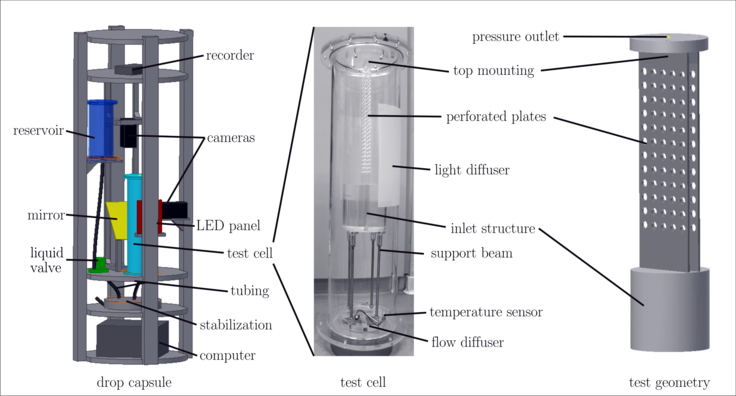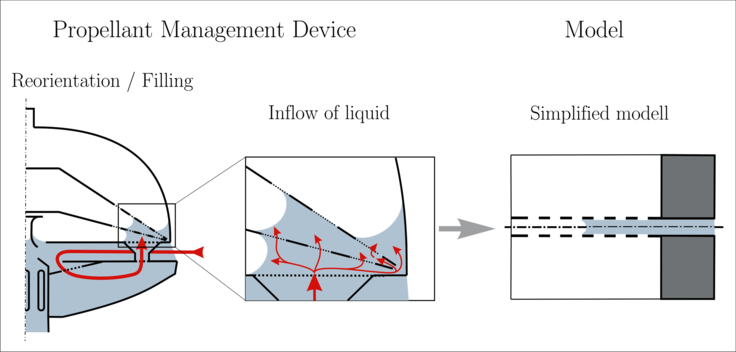Capillary rise between perforated plates
(dt. Kapillartransport zwischen parallelen perforierten Platten )
The subject „Capillary transport of liquid between parallel perforated plates under microgravity“ (PPP) is a part of the project “Kryogene Fluidhandhabung” (KFH). The influence of perforation properties on the capillary transport capability of parallel plates is analyzed experimentally with utilization of the Drop Tower Bremen. CFD tools are validated with these experimental data and these tools are used to further widen the geometrical study. The goal is an analytical method for calculating the relation between capillary transport capability and perforation properties.

The understanding of these fluid mechanical processes plays a major role in the development of fluid interacting structures under microgravity. Fluid positioning poses a major challenge in micro gravity and especially under absence of gravitational forces. Liquid does not tend to be automatically at the lowest point but is placed somewhere in the container dependent on the history. To influence the liquid position and therefore define it for further processes capillary forces are used. To this end certain structures are build e.g. into tanks to maintain a defined amount of liquid near the tank outlet for possible booster re-ignition. These structures are called propellant management devices (PMD). These structures have to be constructed to realize high capillary forces so the positioning of liquid will be quick and the holding of the liquid stable against disturbances. Contrary to this goal the mass of the structure should be as small as possible and during flight phases the flow through the structure should be as smooth as possible. Some of the construction elements are perforated as a compromise between these two objectives. The influence of these perforations on the capillary transport capability is not analyzed sufficiently from the scientific point of view. This project aims at the understanding how properties of perforations influence the capillary transport capability and therefore the fast and accurate positioning of liquid bodies.

The capillary transport between parallel perforated plates is analyzed as a simplified model from the real system because the capillary transport of liquid between parallel plates has been analyzed throughoutly in the past and is therefore quite understood. In this study the influence of perforations on the capillary transport capability of parallel plates is analyzed dependent on plate porosity, perforation diameter, plate distance, plate thickness and perforation alignment. The transport distance of liquid and filling behaviour of perforations are measured relted to existing scientific studies in capillary transport.
[1] Behruzi, P., Dodd, C., Netter, G.: Future propellant management device concepts for restartable cryogenic upper stages, AIAA, 2007-5498, 1–10 (2007) AIAA.
[2] Weislogel, M. M.: Capillary flow in containers of polygonal section: Theory and experiment, NASA/CR-2001-210900 (2001)
[3] Dreyer, M. E.: Free Surface Flows under Compensated Gravity Conditions, Springer Tracts in Modern Physics 221, 51–55 (2007)
[4] Xiao, Y., Yang, F.: Pitchumani. P., A generalized analysis of capillary flows in channels, J. Colloid Interface Sci. 298, 880-888 (2006)


 "
"